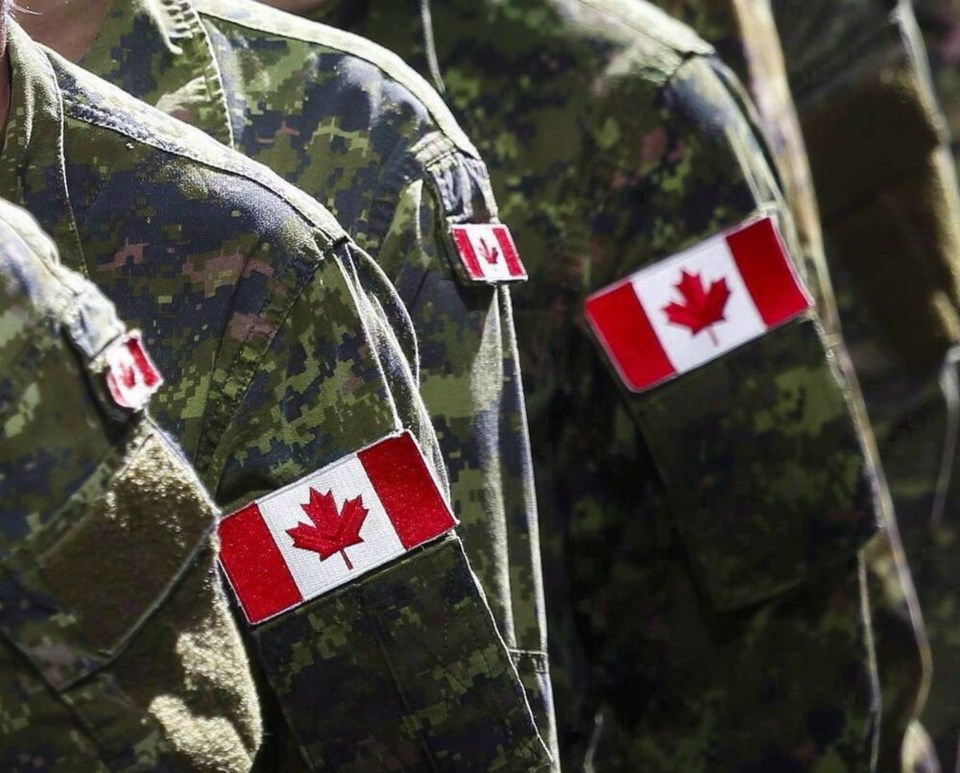A commentary by a retired naval commander who lives in Victoria.
The Canadian Forces should focus on protecting Canada. The mission of the Forces is to provide combat-effective, multi-purpose forces at home and abroad to protect Canada and Canadians, the first element is to defend Canada, the second is to defend North America, and the third is contribute to international peace and security.
Defending Canada includes assisting civil authorities in responding to a wide range of threats, from natural disasters to terrorist attacks.
Canada is not a major military-oriented country, it supports a rather modest level of military forces that are somewhat diffidently equipped. This has always been the norm in the past, except when world situations required nations to boost their military involvement for the common good.
Canada’s military then came to the forefront in situations such as the Second World War, the Cold War, and various United Nations and NATO peacekeeping initiatives. The country then went on a military build-up that was truly astonishing, given the rather diminutive size of its regular military and defence industries.
Looking at the Second World War, at the start in 1939, the Royal Canadian Navy consisted of 13 combat ships. But when the war ended six years later, it had more than 450 ships.
Of course, the ships of those days do not reflect the superior technology of today’s ships. But then again, the shipyards that built them did not have the industrial capabilities of today’s yards. After the war, the Canadian military and defence industries shrunk to their peacetime levels.
Over the past numerous decades, Canada has relied on a relatively small military force during normal times, but when situations required a buildup, this was undertaken readily. However, the country does not appear to be facing a world crisis at this time and would not appear to need to go to a catastrophic acquisition of combat-capable systems.
The North Warning System upgrade is a normal defence and surveillance action that needs to take place to ensure the protection of Canada and the United States.
The NWS is a joint American and Canadian early-warning radar system for the atmospheric air defence of North America. It provides surveillance of airspace from potential incursions or attacks from across North America’s polar region. It replaced the Distant Early Warning Line system in the late 1980s.
The NWS consists of both long-range and short-range surveillance radars, operated and maintained by NORAD. There are 13 long-range sites and 36 short-range sites. In Canada, the station sites are owned or leased by the government of Canada, which also owns most of the infrastructure.
Canada should curtail acquiring major weapon systems at this time since there are no global requirements. This would happen, as it did in the past, when a need materializes.
It should now reorganize its Armed Forces to focus more on the first two missions, first to defend Canada and second to defend North America. The first mission should include responsibility for aid to the civil authorities, such as search and rescue, and the physical protection of the homeland from a law-and-order perspective.
The structure and resource allocation of the Forces should emphasize the first and most vital mission, which is to defend and protect Canada.
In past years, when disaster struck Canadian regions, some military personnel were seen helping as best they could to provide assistance to local authorities. For floods, we saw some members filling sandbags with a shovel, or we may have seen some rescuing people with inflatable boats.
These military rescues should be seen as a true military operation. The rescue missions should reflect military might and should be shown as resourceful, effective and precise.
After all, this is really Canada’s last effort against disasters and unrest and should be attacked by the military in that context. The Forces must accordingly structure and resource itself to cover its critical home front role.
As for the defence of the continent, this should be handled in co-operation with the United States and the NWS. The U.S. has the resources and capabilities, Canada does not. A treaty should be concluded with the U.S. to that effect.
It is ludicrous to think that Canada could provide for the defence of its territory from a major power such as Russia and China. Especially now that the Arctic is becoming a sought-after territory by these two world superpowers.
The U.S. is also interested in the Arctic, but it would certainly not be confrontational to Canada. The third mission, contribute to international peace and security, will continue as in the past with participation in NATO and United Nations taskings.
If the world situation dictates a major buildup of weapon systems, then it will occur as it has always done in the past.



